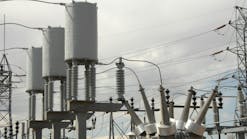The Department of Energy is committing $1.3 billion toward three transmission lines crossing six U.S. states.
This funding, made available through the Bipartisan Infrastructure Law, will advance power transmission projects capable of adding 3.5 GW of power grid capacity, which is equivalent to powering about 3 million average US homes.
This announcement comes the week after the DOE announced $3.46 billion for 58 projects across 44 states as a part of the Grid Resilience and Innovation Partnerships (GRIP) program.
The DOE also released the final National Transmission Needs Study to provide insight into where the power grid and the areas it supports would benefit from better power transmission.
The study estimates that by 2035, transmission capacity will need to double, and interregional transmission capacity will need to increase by more than fivefold.
According to an announcement by the DOE, the Transmission Facilitation Program and the study represent financial and planning elements of DOE’s approach to expanding and modernizing critical electric infrastructure: enhancing transmission planning, strengthening permitting processes and providing financial tools to support deployment.
The Transmission Facilitation Program is a $2.5 billion revolving fund to help overcome the financial hurdles associated with building new, large-scale transmission lines, upgrading existing transmission lines, and connecting microgrids in Hawaii, Alaska, and U.S. territories.
DOE is authorized to borrow up to $2.5 billion to purchase a percentage of the total proposed capacity of the eligible transmission line. By offering capacity contracts, DOE increases the confidence of additional investors, encourages additional customers to purchase transmission line capacity, and reduces the overall risk for project developers.
The selected projects are:
Cross-Tie 500kV Transmission Line (Nevada, Utah). Cross-Tie is a proposed 214-mile, 1500 MW transmission line connecting existing transmission systems in Utah and Nevada to increase transmission capacity, improve grid reliability and resilience, relieve congestion on other key transmission lines, and expand access to low-cost renewable energy across the region.
The bidirectional nature of Cross-Tie will increase transfer capabilities in the West, unlocking increased access to renewable energy resources in the region. Construction is expected to start in Q1 of the calendar year 2025. By 2030, the Mountain region will need nearly 2,300 GW-mi of new transmission to unlock the power sector emissions savings enabled by Inflation Reduction Act. Cross-Tie will contribute 14% to this regional need.
Southline Transmission Project (Arizona, New Mexico). Southline is a proposed 175-mile, 748 MW transmission line from Hidalgo County, New Mexico to Pima County, Arizona that will help unlock renewable energy development in southern New Mexico and deliver clean energy to growing markets in Arizona that currently rely on fossil fuel generation.
The project, which is the first phase of a longer line, will make smart use of existing transmission rights of way along parts of its route, upgrading aging transmission facilities that are the source of congestion and constraints in the region. Construction is expected to start in Q1 of the calendar year 2025.
By 2030, the Southwest will need 935 GW-mi of new transmission to unlock the power sector emissions savings enabled by IRA. The Southline project will contribute 14% to this regional need.
Twin States Clean Energy Link (New Hampshire, Vermont). Twin States is a proposed 1,200 MW high-voltage direct current (HVDC) bidirectional line that will expand the capacity of the New England electric grid and improve its resiliency, reliability, and efficiency by providing access to clean firm energy supplies in Quebec, Canada.
The bidirectional design of the Twin States line will also allow the New England grid to export power to Canada when New England is producing more energy than it needs to meet its own demand, which is expected to occur as the offshore wind industry in New England expands.
Construction is expected to start in Q3 or Q4 of calendar year 2026. The study predicts the Northeast region will need 1.5 GW of new transfer capacity with its neighbors; Twin States will provide 79% to this interregional need.
DOE anticipates releasing a second round of TFP funding in the first half of 2024 through a request for proposals that may include a combination of public-private partnerships, loans, and capacity contracts, totaling up to $1 billion.


